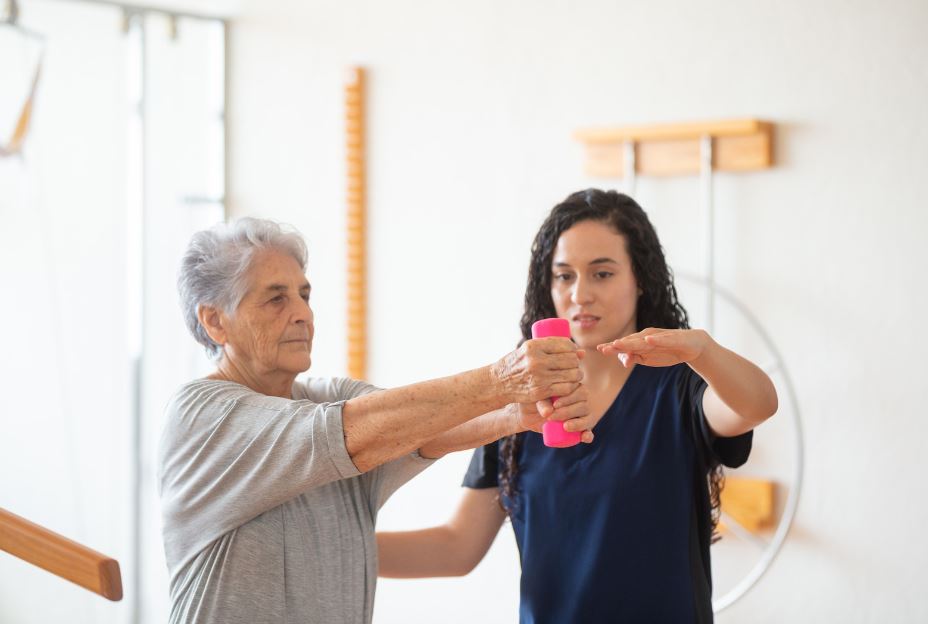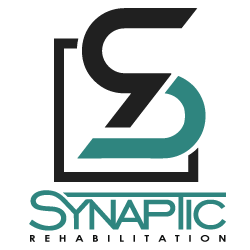
Physical Therapy For Parkinson's Disease
About Parkinson’s Disease
Parkinson’s disease is one of the most common neurodegenerative diseases, which is characterized by a progressive decrease in motor functions and speech skills.
The most susceptible age group to developing this condition consists of elderly adults, rendering them unable to take care of themselves.
Unfortunately, and as the disease progresses, patients start losing more functions, which reduces their autonomous abilities. Therefore, it is crucial to start physical therapy early on in the process to slow down the neuronal degeneration and restore some lost functions.
Signs and Symptoms of Parkinson’s Disease
In most cases, the signs and symptoms of Parkinson’s disease start in a subtle way, which is the main reason for diagnostic delay.
In the beginning, patients may experience slight tremors of their hands, stiffness of the lower limbs, and a characteristic gait. Additionally, facial expressions are often compromised, along with speech and tone of voice.
Over time, the signs start to become more severe, presenting as imbalance, generalized lethargy (i.e., weakness), and a diminished sense of smell.
Note that the clinical presentation of Parkinson’s disease varies between patients, depending on several factors, including age, rate of neuronal degeneration, and treatment efforts.

Have Questions About PT for Parkinson's?
Give us a call 908-801-6425 or click hereto view our contact page
Physical therapy for Patients with Parkinson’s Disease
In this section, we will decipher some physical therapy techniques used to improve the patient’s prognosis and sustain his/her independence.
Amplitude Training
One specific form of physical therapy for patients with Parkinson’s disease is known as LSVT BIG training, which stands for Lee Silverman Voice Treatment.
During this training, patients will make overexaggerated movements, such as high steps and arm swings, to retrain their muscular system and halt the progress of hypokinesia.
You may have also heard of LSVT LOUD, which targets voice amplification to treat voice tones in patients.
Both of these techniques proved to be very effective in helping patients with Parkinson’s disease. We have LSVT certified therapist. Contact us to learn more.
Reciprocal Patterns
Reciprocal movements describe side-to-side and left-to-right motion patterns (e.g., swinging arms, taking steps as you walk), which are severely impacted by Parkinson’s disease.
The goal of the physical therapist will be to reinforce reciprocal motion patterns, using recumbent bicycles, elliptical machines, and other tools.
Balance Work
Maintaining balance is a complex process that involves several physiological systems working simultaneously, including the visual feedback, vestibular system, and proprioception.
Parkinson’s disease targets the neurons responsible for coordinating these processes, which leads to the classic gait associated with most neurodegenerative diseases, as well as severe instability.
Gait training revolves around the practice of specific exercises that improve balance and restore patients’ confidence when walking in public places.
Without physical therapy, this would be difficult.
Takeaway Message
Parkinson’s disease can be scary but try to surround yourself with supportive family, friends and a good medical team. For this reason, physical therapy should be started early on in the process to prevent any unnecessary complications and function loss.
Hopefully, this article managed to shed some light on the important role of physical therapy in the management of Parkinson’s disease, but if you want to learn more information, don’t hesitate to reach out to us by clicking on this link.

parkinson
physical
physical therapies
physical therapist
physical therapists
physical therapy
physiotherapy
pt
therapies
therapist
therapists
therapy
treatment
parkinson
physical
physical therapies
physical therapist
physical therapists
physical therapy
physiotherapy
pt
therapies
therapist
therapists
therapy
treatment
training
disease
parkinson
gait
exercise
gait training
therapy
parkinson's
parkinson's disease
evidence
parkinson disease
rehabilitation
resistance training
patients
physical therapy
health
walking
therapist
physical therapists
research
aerobic exercise
physical therapist
medicine
lsvt
physical activity
exercises
occupational therapy
physiotherapy
strength training
movement disorders
occupational therapist
speech therapist
speech therapy
neurologist
training
disease
parkinson
gait
exercise
gait training
therapy
parkinson's
parkinson's disease
evidence
parkinson disease
rehabilitation
resistance training
patients
physical therapy
health
walking
therapist
physical therapists
research
aerobic exercise
physical therapist
medicine
lsvt
physical activity
exercises
occupational therapy
physiotherapy
strength training
movement disorders
occupational therapist
speech therapist
speech therapy
neurologist
Parkinson's physical therapy physical therapies resistance training mental support
Parkinson's physical therapy physical therapies resistance training mental support
Parkinson's physical therapy physical therapies resistance training mental support
Parkinson's physical therapy physical therapies resistance training mental support
Parkinson's physical therapy physical therapies resistance training mental support
parkinson
physical
physical therapies
physical therapist
physical therapists
physical therapy
physiotherapy
pt
therapies
therapist
therapists
therapy
treatment
training
disease
parkinson
gait
exercise
gait training
therapy
parkinson's
parkinson's disease
evidence
parkinson disease
rehabilitation
resistance training
patients
physical therapy
health
walking
cost
therapist
physical therapists
research
aerobic exercise
related
foundation
based
better
find
states
needed
resistance
depression
best
includes
mental
do not
well
support
signs
sure
dancing
to ask
hypokinesia
ground
org
outcomes
share
group
guide
van
lifestyle
families
making
university
parkinson
physical
physical therapies
physical therapist
physical therapists
physical therapy
physiotherapy
pt
therapies
therapist
therapists
therapy
treatment
training
disease
parkinson
gait
exercise
gait training
therapy
parkinson's
parkinson's disease
evidence
parkinson disease
rehabilitation
resistance training
patients
physical therapy
health
walking
cost
therapist
physical therapists
research
aerobic exercise
related
foundation
based
better
find
states
needed
resistance
depression
best
includes
mental
do not
well
support
signs
sure
dancing
to ask
hypokinesia
ground
org
outcomes
share
group
guide
van
lifestyle
families
making
university
parkinson
physical
physical therapies
physical therapist
physical therapists
physical therapy
physiotherapy
pt
therapies
therapist
therapists
therapy
treatment
training
disease
parkinson
gait
exercise
gait training
therapy
parkinson's
parkinson's disease
evidence
parkinson disease
rehabilitation
resistance training
patients
physical therapy
health
walking
cost
therapist
physical therapists
research
aerobic exercise
related
foundation
based
better
find
states
needed
resistance
depression
best
includes
mental
do not
well
support
signs
sure
dancing
to ask
hypokinesia
ground
org
outcomes
share
group
guide
van
lifestyle
families
making
university
Similarly, a systematic review of research on the application of respiratory muscle strength training to parkinson's disease rehabilitation found that respiratory muscle training is a useful therapy for managing decreased respiratory muscles, dysphagia, ine?
Does dual-task training improve spatiotemporal gait parameters in parkinson's disease?
How does physical therapy help parkinson's disease?
Does robotic gait training improve balance in parkinson's disease?
Do you want to receive exercise and physical therapy treatments that work, that will help you to feel better because the research supports the activities that you do?
Are automatic postural responses in patients with parkinson's disease abnormal due to their stooped posture?
How can occupational therapy help parkinson's disease?
What is LSVT, and how does it help parkinson's disease?
What is LSVT Big therapy and how can it help you?
How can occupational therapy help parkinson's disease?
Do patients with PD benefit from music-assisted therapy plus treadmill-based gait training?
Parkinson's physical therapy Parkinson's physical therapy Parkinson's physical therapy Parkinson's physical therapy Parkinson's physical therapy Parkinson's physical therapy Parkinson's physical therapy Parkinson's physical therapy Parkinson's physical therapy Parkinson's physical therapy Parkinson's physical therapy Parkinson's physical therapy Parkinson's physical therapy Parkinson's physical therapy Parkinson's physical therapy Parkinson's physical therapy Parkinson's physical therapy Parkinson physical therapy Parkinson physical therapy Parkinson physical therapy Parkinson physical therapy Parkinson physical therapy Parkinson physical therapy Parkinson physical therapy Parkinson physical therapy Parkinson physical therapyParkinson's physical therapy Parkinson's physical therapy Parkinson's physical therapy Parkinson's physical therapy Parkinson's physical therapy Parkinson's physical therapy Parkinson's physical therapy Parkinson's physical therapy Parkinson's physical therapy Parkinson's physical therapy Parkinson's physical therapy Parkinson's physical therapy Parkinson's physical therapy Parkinson's physical therapy Parkinson's physical therapy Parkinson's physical therapy Parkinson's physical therapy Parkinson physical therapy Parkinson physical therapy Parkinson physical therapy Parkinson physical therapy Parkinson physical therapy Parkinson physical therapy Parkinson physical therapy Parkinson physical therapy Parkinson physical therapy

